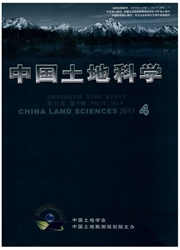

 中文摘要:
中文摘要:
研究目的:深化对主体功能区的认识,探讨基于空间开发潜力评价的泰州市建设用地空间配置方法,为相关规划和政策研究提供参考。研究方法:GIS空间分析法、层次分析法、相关性分析法。研究结果:(1)计算出6126个网格单元、95个乡镇(街道)、6个市(区)的空间开发潜力指数以及泰州市极限建设用地容量;(2)建设用地预测建立在供给——需求关系之上,根据空间开发潜力指数和建设用地需求预测,计算出泰州市建设用地总量指标区域分配方案、城镇用地指标区域分配方案、建设用地城乡统筹方案。研究结论:空间开发潜力评价是主体功能区规划的基础,也是建设用地空间配置的重要依据;建设用地空间上的拓展与空间开发潜力指数基本呈正相关。
 英文摘要:
英文摘要:
The purpose of this paper is to thoroughly understand the concept of main functional area, assessment methods of spatial development potentials, and provide reference for relevant plans and policy explore making. Methods employed include spatial analysis in GIS, hierarchy analysis, correlation analysis. Results suggest that: (1)the spatial development potential indexes and maximum potentials of land for construction of Taizhou were worked out including 6126 grid units, 95 towns (or residential community) and 6 counties (districts) according to assessment approaches; (2) the forecast for construction land was based on the relations between supply and demand, i.e. the spatial development potential indexes and the maximum potentials of land for construction. The land allocation schemes were worked out including scheme for all construction land in Taizhou, scheme for urban and town development, scheme for coordinated urban and rural areas. It is concluded that assessment for spatial development potential is the base for main functional region planning and for spatial allocation of construction land. The spatial expansion of construction land has positive correlation to spatial development potential indexes.
 同期刊论文项目
同期刊论文项目
 同项目期刊论文
同项目期刊论文
 期刊信息
期刊信息
